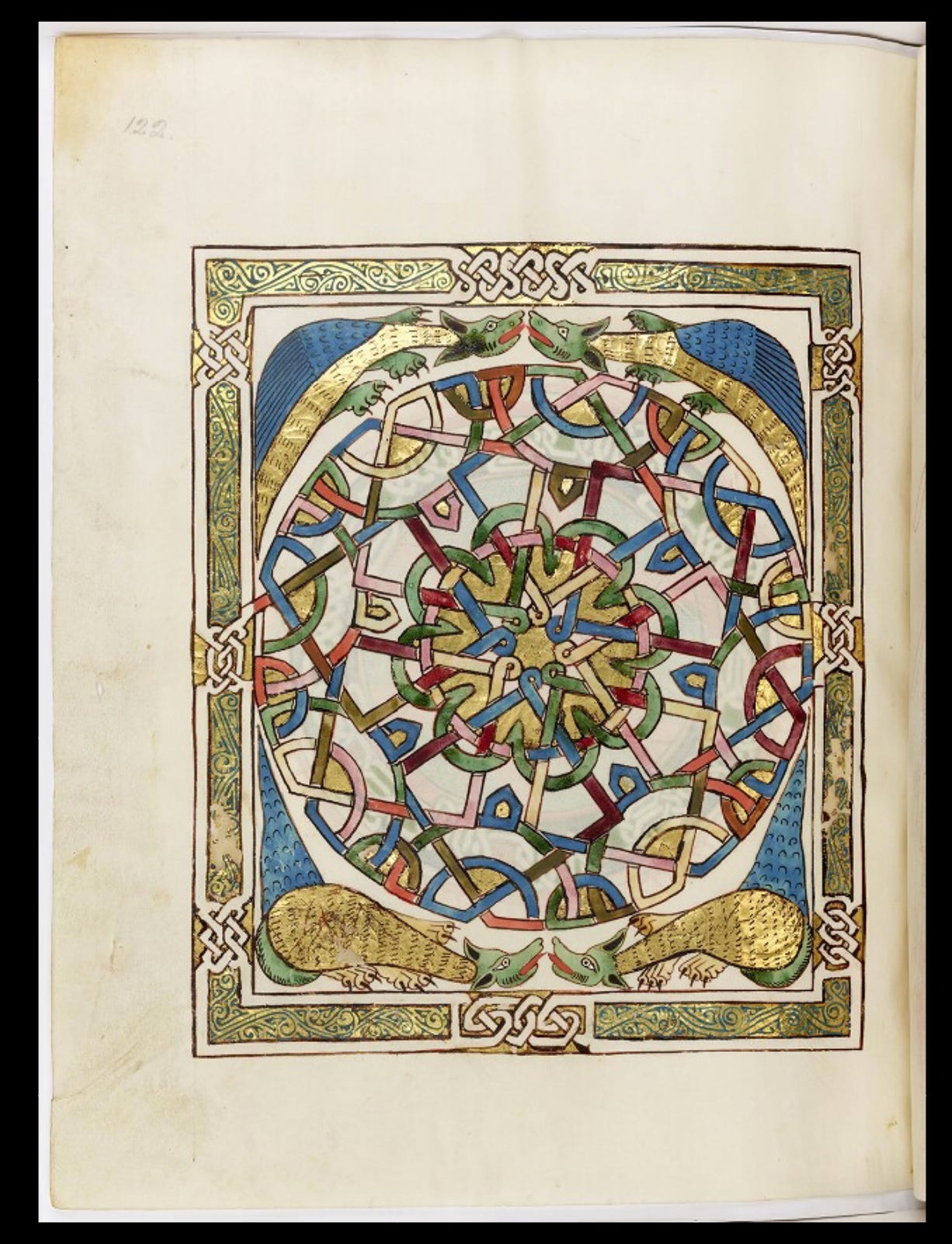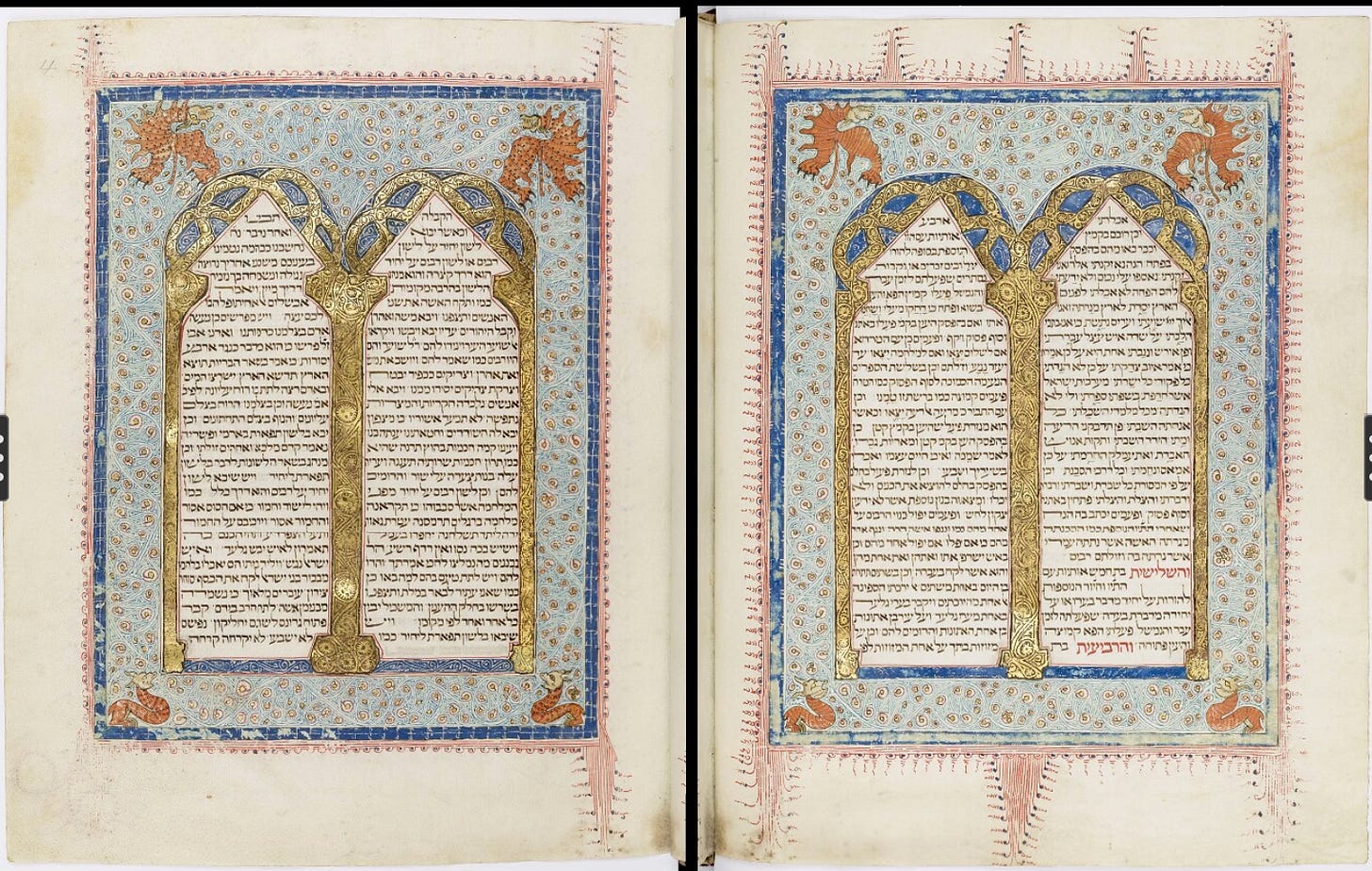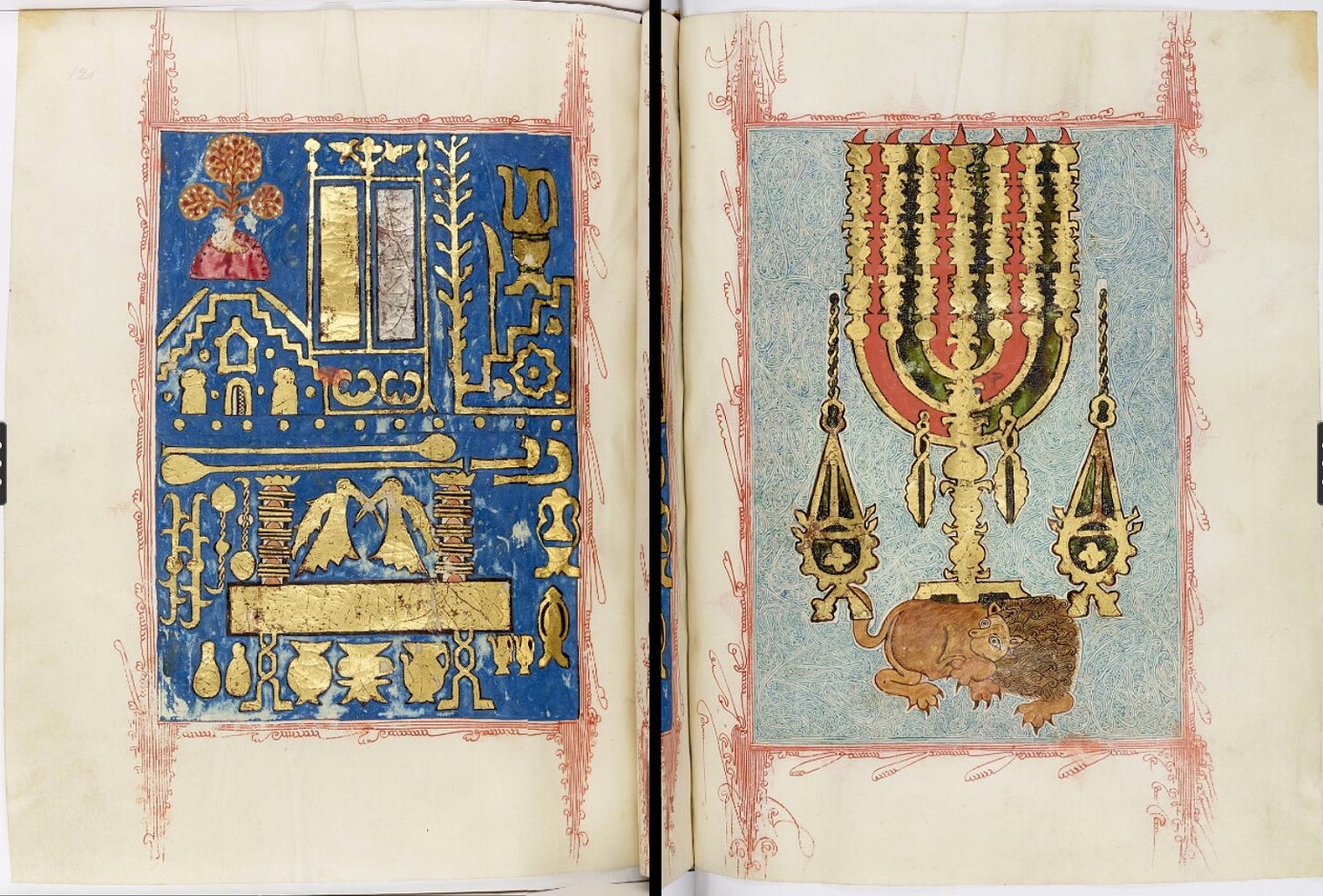One of the most important manuscripts of medieval Spain.
In the video below, prof. Malachi Beit-Arié, gives a brief intro to the manuscript.

In June 1770 Benjamin Kennicott, biblical scholar and Librarian of Oxford’s Radcliffe Library, told the Radcliffe trustees that ‘it might add considerably to the Ornament of that Library, if it possessed one manuscript of the Hebrew Bible’. He informed them that he had in his hands such a manuscript, ‘very elegant and finely illuminated’, and that it was for sale. The trustees duly purchased the Bible the following April, and it remained the property of the Radcliffe Library until 1872, when it was transferred to the Bodleian.1
In the lengthy colophon at the end of the manuscript, now known as the Kennicott Bible (Oxford, Bodleian Lib., MS. Kenn. 1), the scribe Moses Ibn Zabara stated that on Wednesday, the third day of the month of Aviv, in the year 5236 from the creation (24th July 1476), he finished the book in the town of La Coruña, in the province of Galicia, Spain.
He stated that he was personally responsible for the entire text of all twenty-four books of the Bible: he copied the text, added the vocalization marks, wrote all the notes of the Massorah, and finally corrected it against a traditionally accurate Bible. He wrote the Bible for Isaac, son of Solomon di Braga.2


The manuscript contains the entire Tanakh (Old Testament) together with RaDaK’s (Rabbi David Kimhi) Sefer Mikhlol, a grammatical treatise on the Tanakh. Two hundred and thirty-eight of the 922 pages of the Bible are illuminated. There are 24 canonical book headings, 49 parashah headings structured with gold in different motifs featuring figures in many colors, 27 lavishly-illuminated arcaded pages framing the text of the Sefer Mikhlol, 9 fully illuminated carpet pages, and 150 psalm headings.
Thank you so much for being here, for reading and sharing my work.
If you enjoy,
click the ❤️ button
share it with someone else
leave a comment and/or
buy me a 🧁
http://bav.bodleian.ox.ac.uk/news/the-kennicott-bible;
digitized manuscript available at: https://digital.bodleian.ox.ac.uk/objects/8c264b23-f6cc-4f18-98cf-9d75f7175b54/surfaces/bf27753e-46da-4068-8e1a-ef329b4a969e/
https://www.historyofinformation.com/detail.php?id=3787








I am awed by the reverence to the text by the extensive illumination as well as use of costly inks. The page you included with the large Hebrew lettering is a work of art in and of itself. . . not to mention of course, the calligraphy as a whole throughout. The ease of production since the printing press pales in comparison, as well as being valued, to the long and painstaking dedication to the elevated process represented millennia ago. Thank you Aleksandra for continuing to share these pieces of our history and lineage.
Truly fascinating
(why "month of Aviv"? ?הרי אביב זו אונה ולא חודש"